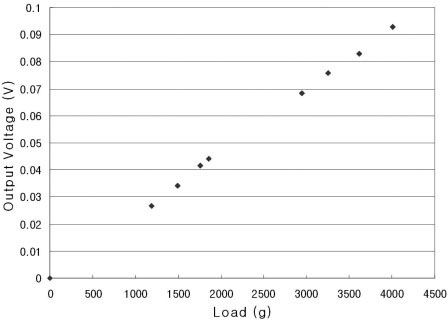References
1. Braga RR, Ferracane JL. Alternatives in polymerization contraction stress management. Crit Rev Oral Biol Med 2004. 15(3)176–184.
2. Kleverlaan CJ, Feilzer AJ. Polymerization shrinkage and contraction stress of dental resin composites. Dent Mater 2005. 21(12)1150–1157.
3. Song YX, Inoue K. Linear shrinkage of photo-activated composite resins during setting. J Oral Rehabil 2001. 28(4)335–341.
4. Lee IB, Cho BH, Son HH, Um CM. A new method to measure the polymerization shrinkage kinetics of light cured composites. J Oral Rehabil 2005. 32(4)304–314.
5. Dauvillier BS, Aarnts MP, Feilzer AJ. Developments in shrinkage control of adhesive restoratives. J Esthet Dent 2000. 12(6)291–299.
6. Carvalho RM, Pereira JC, Yoshiyama M, Pashley DH. A review of polymerization contraction: the influence of stress development versus stress relief. Oper Dent 1996. 21(1)17–24.
7. Park J, Chang J, Ferracane J, Lee IB. How should composite be layered to reduce shrinkage stress: incremental or bulk filling? Dent Mater 2008. 24(11)1501–1505.
8. Lee MR, Cho BH, Son HH, Um CM, Lee IB. Influence of cavity dimension and restoration methods on the cusp deflection of premolars in composite restoration. Dent Mater 2007. 23(3)288–295.
9. Labella R, Lambrechts P, Van Meerbeek B, Vanherle G. Polymerization shrinkage and elasticity of flowable composites and filled adhesives. Dent Mater 1999. 15(2)128–137.
10. Guggenberger R, Weinmann W. Exploring beyond methacrylates. Am J Dent 2000. 13(Spec No)82D–84D.
11. Chantler PM, Hu X, Boyd NM. An extension of a phenomenological model for dental composites. Dent Mater 1999. 15(2)144–149.
12. Venhoven BA, de Gee AJ, Davidson CL. Light initiation of dental resins: dynamics of the polymerization. Biomaterials 1996. 17(24)2313–2318.
13. Feilzer AJ, De Gee AJ, Davidson CL. Setting stress in composite resin in relation to configuration of the restoration. J Dent Res 1987. 66(11)1636–1639.
14. Park J, Chang J, Ferracane J, Lee IB. How should composite be layered to reduce shrinkage stress: incremental or bulk filling? Dent Mater 2008. 24(11)1501–1505.
15. Lutz E, Krejci I, Oldenburg TR. Elimination of polymerization stresses at the margins of posterior composite resin restorations: a new restorative technique. Quintessence Int 1986. 17(12)777–784.
16. Bowen RL, Nemoto K, Rapson JE. Adhesive bonding of various materials to hard tooth tissues: forces developing in composite materials during hardening. J Am Dent Assoc 1983. 106(4)475–477.
17. Bowen RL. Adhesive bonding of various materials to hard tooth tissues. VI. Forces developing in direct-filling materials during hardening. J Am Dent Assoc 1967. 74(3)439–445.
18. Hegdahl T, Gjerdet NR. Contraction stresses of composite resin filling materials. Acta Odontol Scand 1977. 35(4)191–195.
19. Bouschlicher MR, Vargas MA, Boyer DB. Effect of composite type, light intensity, configuration factor and laser polymerization on polymerization contraction forces. Am J Dent 1997. 10(2)88–96.
20. Watts DC, Marouf AS, Al-Hindi AM. Photo-polymerization shrinkage-stress kinetics in resin-composites: methods development. Dent Mater 2003. 19(1)1–11.
21. Chen HY, Manhart J, Kunzelmann KH, Hickel R. Polymerization contraction stress in light-cured compomer restorative materials. Dent Mater 2003. 19(7)597–602.
22. Chen HY, Manhart J, Hickel R, Kunzelmann KH. Polymerization contraction stress in light-cured packable composite resins. Dent Mater 2001. 17(3)253–259.
23. Lu H, Stansbury JW, Dickens SH, Eichmiller FC, Bowman CN. Probing the origins and control of shrinkage stress in dental resin-composites: I. Shrinkage stress characterization technique. J Mater Sci Mater Med 2004. 15(10)1097–1103.
24. Braga RR, Hilton TJ, Ferracane JL. Contraction stress of flowable composite materials and their efficacy as stress-relieving layers. J Am Dent Assoc 2003. 134(6)721–728.
25. Braga RR, Ferracane JL. Contraction stress related to degree of conversion and reaction kinetics. J Dent Res 2002. 81(2)114–118.
26. Condon JR, Ferracane JL. Assessing the effect of composite formulation on polymerization stress. J Am Dent Assoc 2000. 131(4)497–503.
27. Braga RR, Ferracane JL. Alternatives in polymerization contraction stress management. Crit Rev Oral Biol Med 2004. 15(3)176–184.
28. Lee SH, Chang J, Ferracane J, Lee IB. Influence of instrument compliance and specimen thickness on the polymerization shrinkage stress measurement of light-cured composites. Dent Mater 2007. 23(9)1093–1100.
29. Watts DC, Vogel K, Marouf AS. Shrinkage stress reduction in resin-composites of increasing particle concentration (abstract 2444). J Dent Res 2002. 81A–308.
30. Feilzer AJ, Dauvillier BS. Effect of TEGDMA/BisGMA ratio on stress development and viscoelastic properties of experimental two-paste composites. J Dent Res 2003. 82(10)824–828.
31. La SH, Lee IB, Cho BH, Son HH. Effect of light intensity on the polymerization rate of composite resin using real time measurement of volumetric change. J Korean Acad Conserv Dent 2002. 27(2)135–141.
32. Park JG, Lim BS, Lee IB. Cuspal deflection in class v cavities restored with composite resins. J Korean Acad Conserv Dent 2008. 33(2)83–89.
33. Lee IB, Cho BH, Son HH, Um CM. Rheological characterization of composites using a vertical oscillation rheometer. J Korean Acad Conserv Dent 2004. 29(6)489–497.







